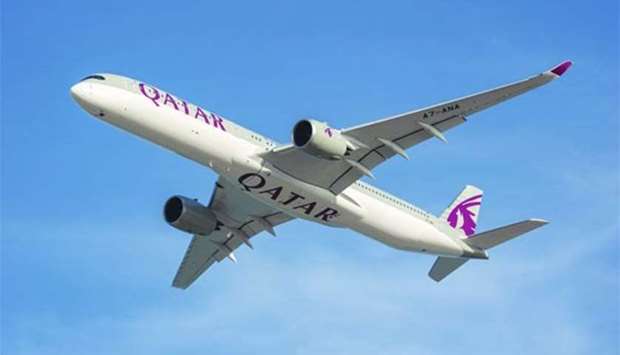Integrated Operations Centre demonstrated its superior ability to handle disruptions of any size and nature during the blockade
Qatar Airways Group has achieved an on-time-performance (OTP) of 90.6% over many months with assistance from its Integrated Operations Centre (IOC), which demonstrated its superior ability to handle disruptions of any size and nature, during the blockade.
According to Qatar Airways Group ‘Annual Report 2018’, the OTP recorded “over the past 13 months is among the highest for airlines globally.”
Qatar Airways’ Integrated Operations Centre (IOC), now in its second year of operation, has proven to be a “significant asset” in enhancing the airline’s network performance.
While the closure of airspace that took place without warning was designed to have a crippling effect on airline operations, the immediate initial operational impact was dealt with within the first 48 hours and the stabilisation of airline operations was achieved within one week.
“It was through IOC functioning effectively, which dramatically reduced the impact of the illegal action from potentially severe to manageable,” the report said.
In the new IOC all relevant commercial and operational departments are represented by decision-makers, who are able to make real-time decisions to evolving situations as they occur, without the delay of referring decisions elsewhere. This is one of the key differences between the former Operations Control Centre (OCC) and the new IOC, and the reason for its enhanced flexibility and effectiveness.
The transition from OCC to IOC has been smoothly handled. However, the transition continues as the commercial capabilities of the business are continually enhanced.
In the IOC model, the operational and commercial departments collaborate in an integrated team to maximise optimisation at every level.
Planning for the passenger and cargo network is completed by the 15th of every month, which is then handed over to the commercial team for optimisation. The result is maximised utilisation of human and physical resources in every operational area – and a process of continuous improvement that is functioning 24-hours-a-day, 365-days-a-year.
To support this, IOC has invested in technology to refine the operational requirements. The resulting Total Operating System (TOPS) has been active for two years, with the second phase of TOPS (which will become active by mid-2018) set to optimise crew rostering and control for passenger and cargo operations.
Moving forward, Qatar Airways Group said IOC continues to develop its analytical capability by further developing the Flight Operations Data Warehouse launched in 2016.
The continuation of adding resources to this initiative will increase the data warehouse’s established ability to enhance day-to-day decision-making and inform long-term strategies based on ever-evolving predictive capabilities for Qatar Airways, it said.




